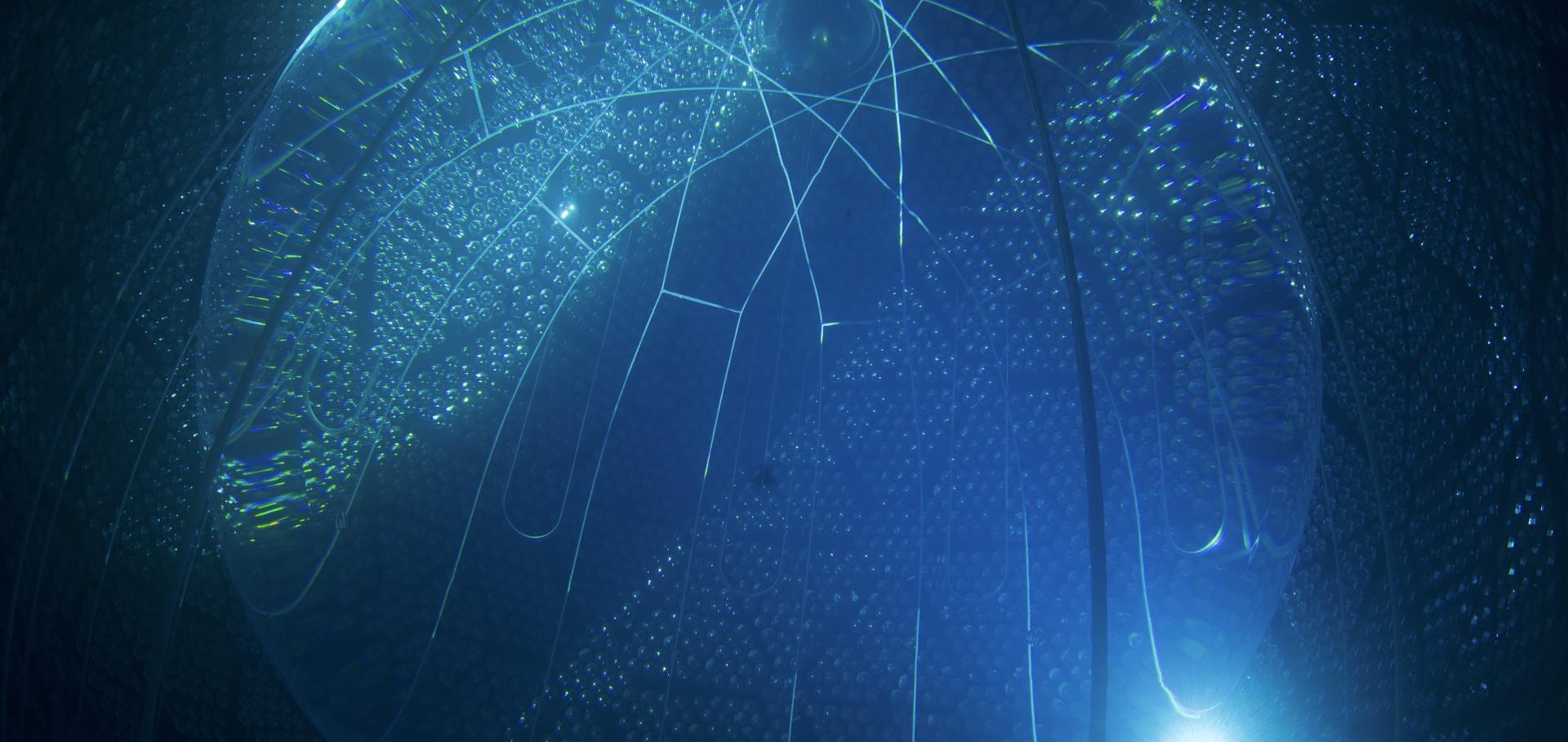Measurement of azimuthal anisotropy of muons from charm and bottom hadrons in pp collisions at sqrt[s]=13 TeV with the ATLAS Detector
Physical Review Letters American Physical Society 124:8 (2020) 82301
Abstract:
The elliptic flow of muons from the decay of charm and bottom hadrons is measured in pp collisions at sqrt[s]=13 TeV using a data sample with an integrated luminosity of 150 pb^{-1} recorded by the ATLAS detector at the LHC. The muons from heavy-flavor decay are separated from light-hadron decay muons using momentum imbalance between the tracking and muon spectrometers. The heavy-flavor decay muons are further separated into those from charm decay and those from bottom decay using the distance-of-closest-approach to the collision vertex. The measurement is performed for muons in the transverse momentum range 4-7 GeV and pseudorapidity range |η|<2.4. A significant nonzero elliptic anisotropy coefficient v_{2} is observed for muons from charm decays, while the v_{2} value for muons from bottom decays is consistent with zero within uncertainties.Search for electroweak production of charginos and sleptons decaying into final states with two leptons and missing transverse momentum in √s=13 TeV pp collisions using the ATLAS detector
European Physical Journal C Springer Nature 80:2 (2020) 123
Abstract:
A search for the electroweak production of charginos and sleptons decaying into final states with two electrons or muons is presented. The analysis is based on 139 fb−1 of proton–proton collisions recorded by the ATLAS detector at the Large Hadron Collider at s√=13 TeV. Three R-parity-conserving scenarios where the lightest neutralino is the lightest supersymmetric particle are considered: the production of chargino pairs with decays via either W bosons or sleptons, and the direct production of slepton pairs. The analysis is optimised for the first of these scenarios, but the results are also interpreted in the others. No significant deviations from the Standard Model expectations are observed and limits at 95% confidence level are set on the masses of relevant supersymmetric particles in each of the scenarios. For a massless lightest neutralino, masses up to 420 GeV are excluded for the production of the lightest-chargino pairs assuming W-boson-mediated decays and up to 1 TeV for slepton-mediated decays, whereas for slepton-pair production masses up to 700 GeV are excluded assuming three generations of mass-degenerate sleptons.Measurement of the azimuthal anisotropy of charged-particle production in Xe plus Xe collisions at root S-NN=5.44 TeV with the ATLAS detector
Physical Review C American Physical Society 101:2 (2020) 24906
Abstract:
This paper describes the measurements of flow harmonics v2-v6 in 3μb-1 of Xe+Xe collisions at sNN=5.44 TeV performed using the ATLAS detector at the Large Hadron Collider (LHC). Measurements of the centrality, multiplicity, and pT dependence of the vn obtained using two-particle correlations and the scalar product technique are presented. The measurements are also performed using a template-fit procedure, which was developed to remove nonflow correlations in small collision systems. This nonflow removal is shown to have a significant influence on the measured vn at high pT, especially in peripheral events. Comparisons of the measured vn with measurements in Pb+Pb collisions and p+Pb collisions at sNN=5.02 TeV are also presented. The vn values in Xe+Xe collisions are observed to be larger than those in Pb+Pb collisions for n=2, 3, and 4 in the most central events. However, with decreasing centrality or increasing harmonic order n, the vn values in Xe+Xe collisions become smaller than those in Pb+Pb collisions. The vn in Xe+Xe and Pb+Pb collisions are also compared as a function of the mean number of participating nucleons, (Npart), and the measured charged-particle multiplicity in the detector. The v3 values in Xe+Xe and Pb+Pb collisions are observed to be similar at the same (Npart) or multiplicity, but the other harmonics are significantly different. The ratios of the measured vn in Xe+Xe and Pb+Pb collisions, as a function of centrality, are also compared to theoretical calculations.Measurement of differential cross sections for single diffractive dissociation in root s=8 TeV pp collisions using the ATLAS ALFA spectrometer
Journal of High Energy Physics Springer 2020:2 (2020) 42
Abstract:
A dedicated sample of Large Hadron Collider proton-proton collision data at centre-of-mass energy s√ = 8 TeV is used to study inclusive single diffractive dissociation, pp → X p. The intact final-state proton is reconstructed in the ATLAS ALFA forward spectrometer, while charged particles from the dissociated system X are measured in the central detector components. The fiducial range of the measurement is −4.0 < log10ξ < −1.6 and 0.016 < |t| < 0.43 GeV2, where ξ is the proton fractional energy loss and t is the squared four-momentum transfer. The total cross section integrated across the fiducial range is 1.59 ± 0.13 mb. Cross sections are also measured differentially as functions of ξ, t, and ∆η, a variable that characterises the rapidity gap separating the proton and the system X . The data are consistent with an exponential t dependence, dσ/dt ∝ eBt with slope parameter B = 7.65 ± 0.34 GeV−2. Interpreted in the framework of triple Regge phenomenology, the ξ dependence leads to a pomeron intercept of α(0) = 1.07 ± 0.09.Z boson production in Pb+Pb collisions at √sNN = 5.02 TeV measured by the ATLAS experiment
Physics Letters B Elsevier 802 (2020)


